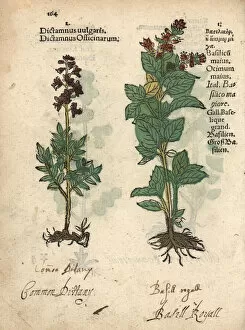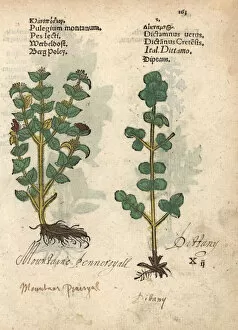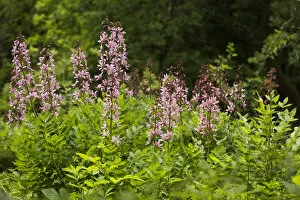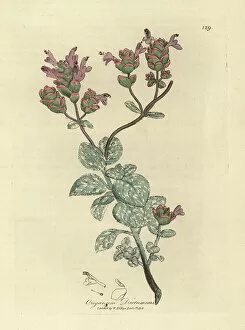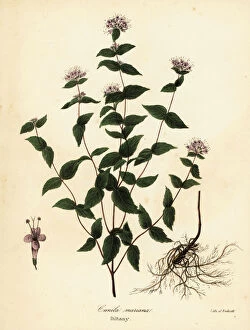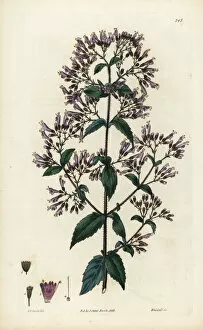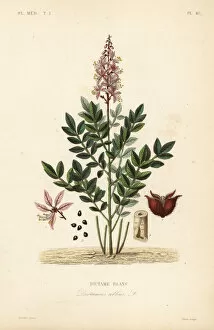Dittany Collection
Dittany, also known as Cunila mariana or sweet dittany, is a fascinating herb that has captured the attention of botanists and nature enthusiasts alike
For sale as Licensed Images
Choose your image, Select your licence and Download the media
Dittany, also known as Cunila mariana or sweet dittany, is a fascinating herb that has captured the attention of botanists and nature enthusiasts alike. Its delicate lilac flowers and aromatic leaves make it a popular choice for gardens and herbal remedies. In 1883, a botanical illustration showcased the diverse range of names associated with this remarkable plant. From peacock flower to copaiba, mahogany to bitterwood, each name reflects its unique qualities and uses. One can find groups of flowering Dittany in downy oak forest habitats like Kaiserstuhl. The sight of these vibrant blooms amidst lush greenery is truly enchanting. Not only does dittany add beauty to landscapes, but it also offers culinary benefits. Its leaves are often used as leaf vegetables in various dishes, adding a touch of freshness and flavor to meals. Dictamnus albus, commonly known as white dittany or burning bush due to its flammable properties when ignited by fire or sparks, showcases several geographical variants across different regions. The lilac-flowered dittany from Crete (Origanum dictamnus) is particularly renowned for its medicinal properties and has been used for centuries in traditional medicine for its healing abilities. Another variation called stone mint or frost mint (Cunila origanoides) shares similarities with American dittany (Cunila mariana). These plants possess a refreshing aroma that invigorates the senses. Nature's pollinators are not immune to the allure either. A buff-tailed bumblebee was spotted visiting the flower of Dictamnus albus in Umbria, Italy during May - an exquisite moment capturing the harmony between flora and fauna. Whether you call it Common dittany or sweet thyme-like herb Thymus serpyllum intertwined with wild thyme.

